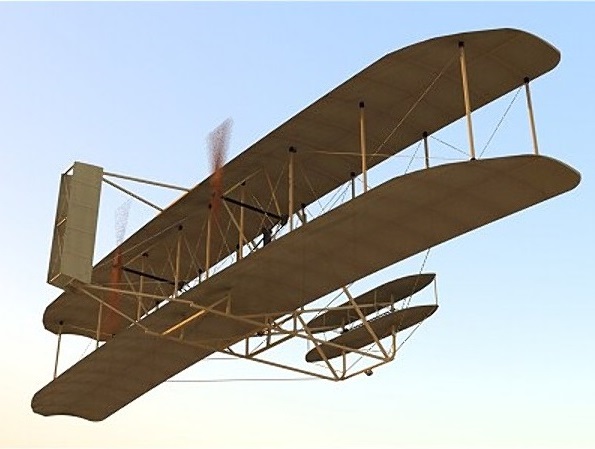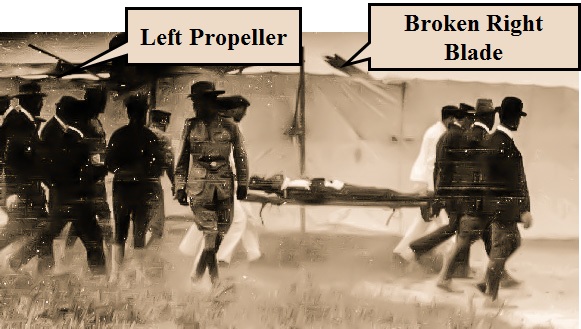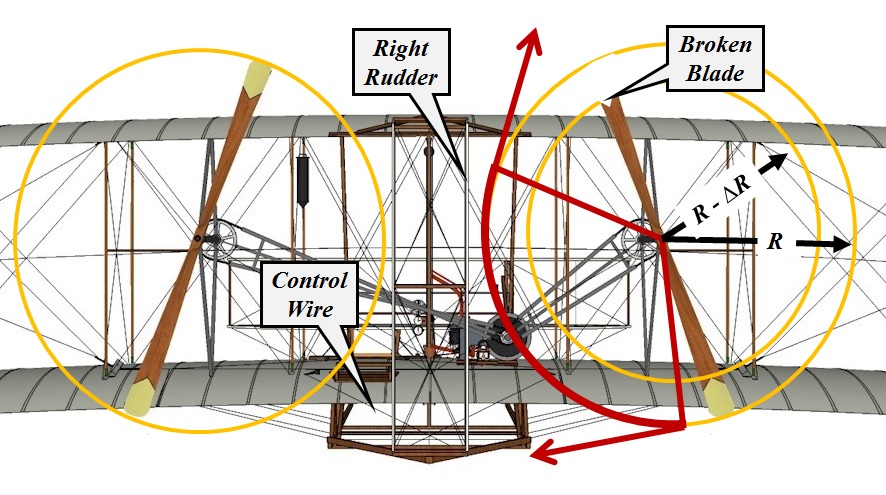|
Version 2.1 Copyright ©2017 by Paul Niquette. All rights reserved. |
|||||||||
September 17, 1908, Orville Wright
conducted a demonstration flight in the Wright Flyer Model A
for the U.S. Army at Fort Myer, Virginia. His
passenger was Lt. Thomas Selfridge.  After the machine completed four laps over the parade grounds at 150 feet in elevation, witnesses saw a "sizable fragment fly off into the air." Orville Wright described the ensuing events in a letter to his brother Wilbur...
An abundance of literature about the 1908 crash is available on the Internet. Solvers will find some accounts to be questionable. Contemporaneous analyses -- even official investigations -- were based on incomplete technical knowledge at that time about key aviation realities. For example, the management of asymmetrical thrust as explored in Pilot's Nightmare... Asymmetrical thrust -- a good engine on one wing working against the drag of a dead engine on the opposite wing -- can flip the plane onto its back. Twin-engine flight training is dominated by the pilot learning critical reflexes -- "step on the good engine!" (with the correct rudder-pedal) and "never to turn into a bad engine!"...was not appropriate for any of the Wright Flyers, inasmuch as each had one 'good engine' driving two propellers. Practice for its failure would merely cause the machine to revert to the familiar status of a glider without manifesting the hazards of asymmetrical thrust.
Let us begin with... I suppose it was not two or three seconds from the time the first taps were heard, until two big thumps, which gave the machine a terrible shaking, showed that something had broken....and examine this post-crash photograph...
The propeller blade was subjected to bending forces, which increased with radial distance from the drive axis. Accordingly, failure of the blade probably began with splintering near the tip, which would explain the first taps from that initial imbalance. Most likely, the final blade failure took place in two stages, manifested as the two big thumps... Stage 1 The blade fragment folded forward under the influence of the 'lift' vector, which by design was pushing the whole Wright Flyer forward. Other explanations for those observations can be found in the literature. Most postulate damage to the aft structure on the Wright Flyer Model A inflicted by the blade fragment...
The Wright Flyer was the first of many
aircraft designs that exploit the Canard Advantage, which
puts the elevator
control forward-most on the aircraft rather
than in the tail along with the rudder (see empennage).
Thus damage from the blade fragment could not have a
direct effect on the Wright Flyer's pitch
control at the beginning of the sequence of events.
The "sizable fragment" of the propeller blade necessarily began its trajectory on a tangent from a point in the propeller rotation that depended on the instant of its separation. The sketch above shows that for 2/3rd of the arc defined by the propeller tip, the fragment would have taken a trajectory away from the tail structure and rudder. The red part of the arc suggests that, with a 1/3rd probability, the rudders might be struck.
We are left with the following events to explain: The machine suddenly turned to the right and I immediately shut off the power. Quick as a flash, the machine turned down in front and started straight for the ground. Our course for 50 feet was within a very few degrees of the perpendicular.
 |


